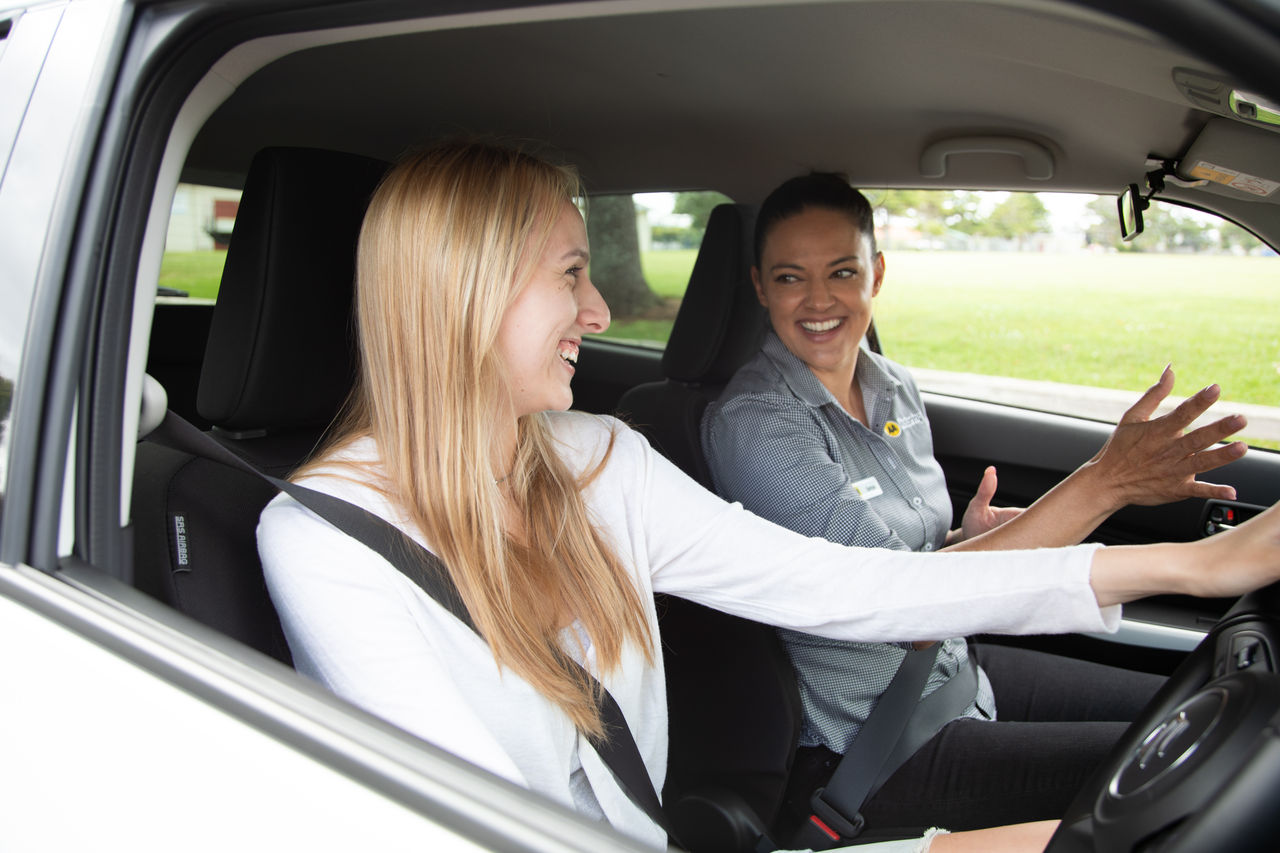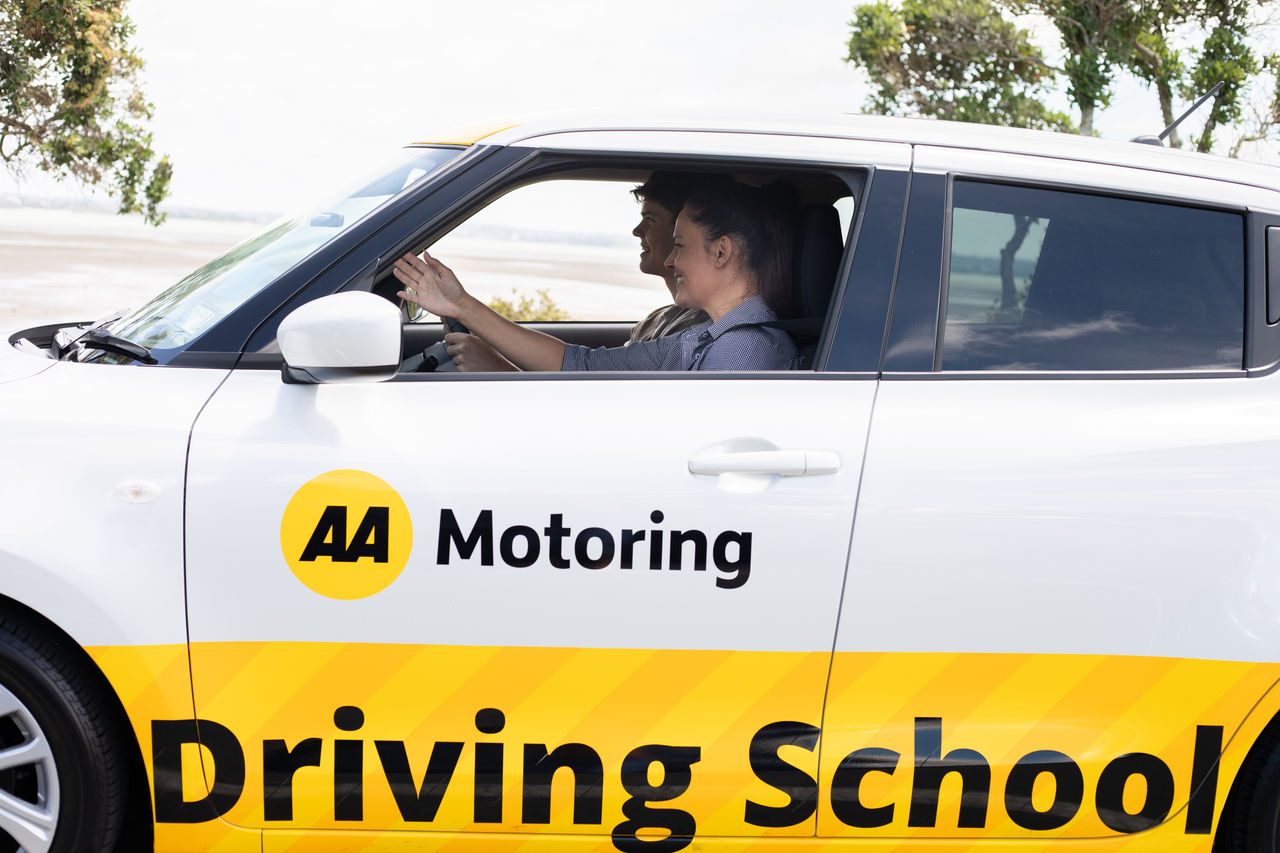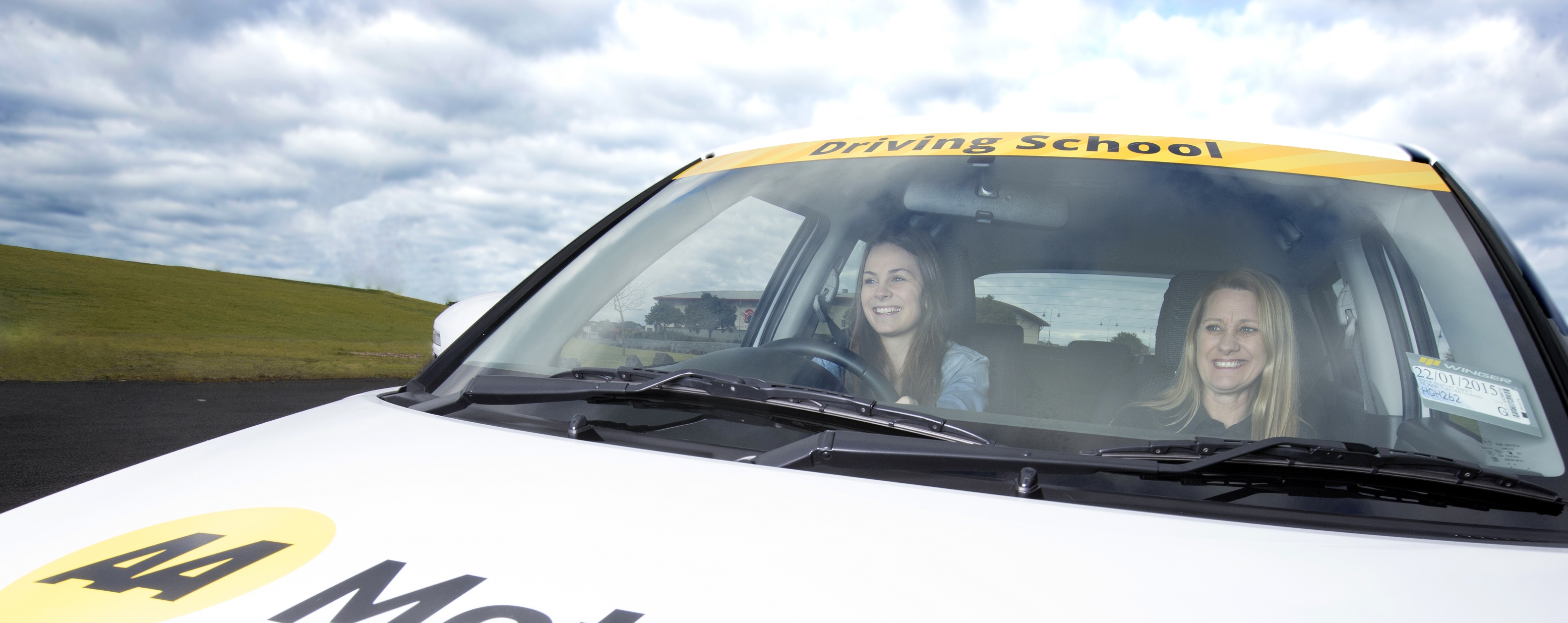The beginner’s guide to getting behind the wheel
21 December 2021
Learning to drive can be a stressful, time-consuming experience. It can seem daunting and overwhelming to learners and their support people. Moving forward with an understanding of some basic guidelines will help make the process a lot less traumatic.

AA recommends after passing the theory test and getting your learner licence, that you start your practical driving journey with professional lessons, while doing work with your practice supervisor on a few new skills during each practice session. Learner drivers should aim to have at least five professional driving lessons with 10-20 hours of practice between each lesson.
Your practice supervisor should try to help you to experience a range of driving conditions including driving in the wet, at night, in high volume traffic and on motorways.
The restricted and full licence tests are more complex tests that assess your driving skills. It is recommended that you get plenty of practice (as least 120 hours if you have a learner licence) before you sit a practical test.

Don’t ditch your Road Code
A common misconception is that once you’ve passed your theory test you don’t need the Road Code or other related information anymore. It’s important to remember that the driver theory knowledge and information is not just for the test, it’s needed for everyday driving.
Give yourself a head start
It pays to know the basics before your first lesson. The chances are that someone close to you owns a car, so get them to show you the key areas before your first lesson. Knowing your way around a vehicle beforehand might make it easier when your instructor comes to explain to you how to drive a car.
Even something as simple as the indicators - Euro and US-centric cars generally have indicators on the left, Japanese cars have them on the right. Being unfamiliar with this when driving can be distracting and dangerous. A little bit of familiarity with the car will go a long way to ensuring that under pressure, the novice driver will be making the right decisions and using the right controls.
It’s very important to remember to always take your driver licence. You are required by law to carry this at all times while driving a car, and you risk losing your licence and being fined if you are caught not having your licence on you when driving. If you need to take your phone with you during a drive then you should either turn it off or set it to silent mode. You will not need your phone at all during your driving lesson, and using a mobile device while driving is both dangerous and against the law.
Choose the right transmission
Although people are encouraged to at least try to learn to drive in a manual car, it is not for everybody. Many people now opt to learn to drive in an automatic cars, which can be more convenient and less complicated to drive. Some drivers enjoy changing gears and like the connection it gives them to their vehicle, while others prefer Automatic because you don’t need to concentrate on changing gears and operating the clutch, and you can directly focus on the road and the speed you’re traveling. But just be aware that if you get an automatic driving restricted licence, you will not be permitted to drive a manual car until you have your full driver licence.
Embrace the technology
Features such as Cruise Control – and even active versions that automatically accelerate and brake the car, lane diversion systems that bump the steering wheel or rattle the seat, and even fatigue monitors are becoming more widespread as they become more affordable.
They can be a great help to new drivers, but until novice drivers fully understand what these systems are and do, feeling them kick in can be very disconcerting. It is important that the instructor makes sure the novice driver knows what these systems are, what they do, and even demonstrate them. Something as simple as Anti-Lock Brakes, which mean the driver doesn’t have to lift their foot off the brake pedal to perform a full emergency stop, could one day make a big difference.
By the time the novice driver gets around to buying their own vehicle, chances are these systems will be an integral part of the car.
Get comfortable behind the wheel
Finding the correct driving position may come naturally to most of us, but for someone who has never driven before, being comfortable behind the wheel is vital. Adjust the seating position so that the driver can comfortably see both the road ahead, and the instrument cluster in front of them is the first important step to driver comfort, not to mention safety. It is also important that novice drivers always make sure certain footwear is avoided when learning to drive like jandals or high heels which can run the risk of slipping off the pedals.
Vision is paramount
The vehicle’s mirrors should be set so that they require the minimal amount of driver head movement, yet provide the maximum amount of visibility. Once the new driver has set a comfortable driving position, it’s time to set the rear-view and side mirrors. Your mirrors need to be adjusted to suit your line of vision every time you get into your car, especially if you share your car with another driver. You should be able to see your full rear window in the rear-view mirror and your side-view mirrors need to be positioned correctly for blind spots. Ideally, your own car should be almost out of view in your side-view mirrors, this will give you a better view of any cars approaching from behind.
Learn from your mistakes
Simple mistakes when learning to drive with an instructor present are inevitable but you shouldn’t dwell on them. Whether it be stalling the vehicle under pressure or getting a manoeuvre wrong, it is important to remain calm in these situations and not to worry about what other drivers think. Just like you, the instructor has been in exactly the same situation and should fully empathise. An example of such a situation may be that you may be faced with a situation of having to go through roadworks at 30km/hour and feeling the angry glare of the driver behind you in the rear vision mirror.
Always drive to the road rules and limits – altering this because of driver pressure will only end badly for you.
Persevere
Don’t beat yourself up if you fail once or even multiple times. Take any feedback on board so you won’t make the same mistake next time. According to recent data on average only 58% of people pass the Restricted Test first time round. Also book your next test right away. Leaving it too long between tests may result in you forgetting certain things and even losing more confidence as time goes by. It could also end up costing you more money on further lessons and tests.
Use what you have learned after you pass
When you pass your test, the learning continues. Drivers on a restricted licence are seven times more likely to be involved in a fatal or serious injury crash than other drivers.
Data also shows that young restricted drivers are more at risk of having a serious crash in the first six to 12 months of driving solo on their restricted licence than at any other time in their lives. You’ll face new situations all the time so it’s important you do not dismiss all you have learnt and that you approach each new situation with the same careful thinking and execution that you are initially taught.
Find out more on how the AA can help
- AA Driving Lessons - aa.co.nz/driving-lessons
- AA Drivers - aa.co.nz/drivers
- AA Driver Licences - aa.co.nz/driver-licences
Vehicle experts you can trust

